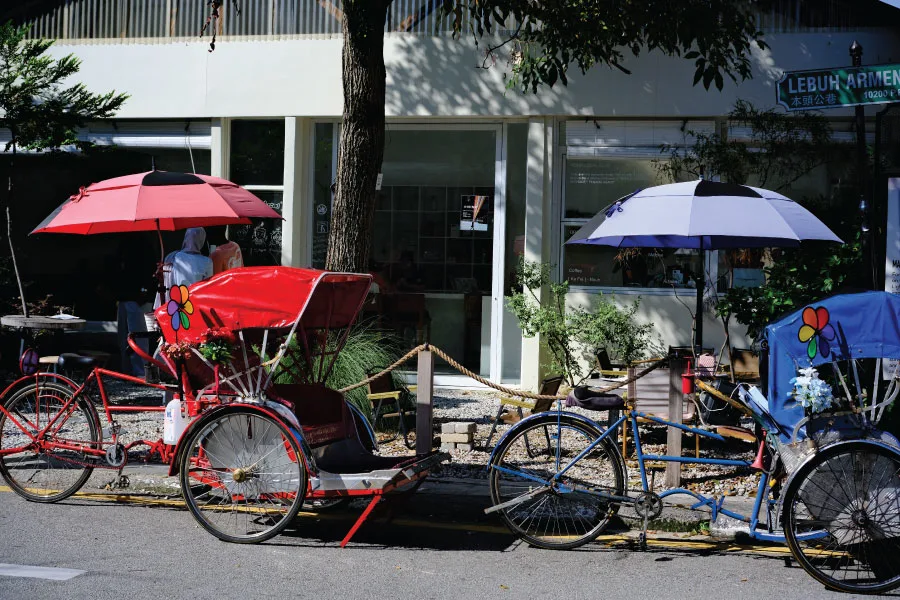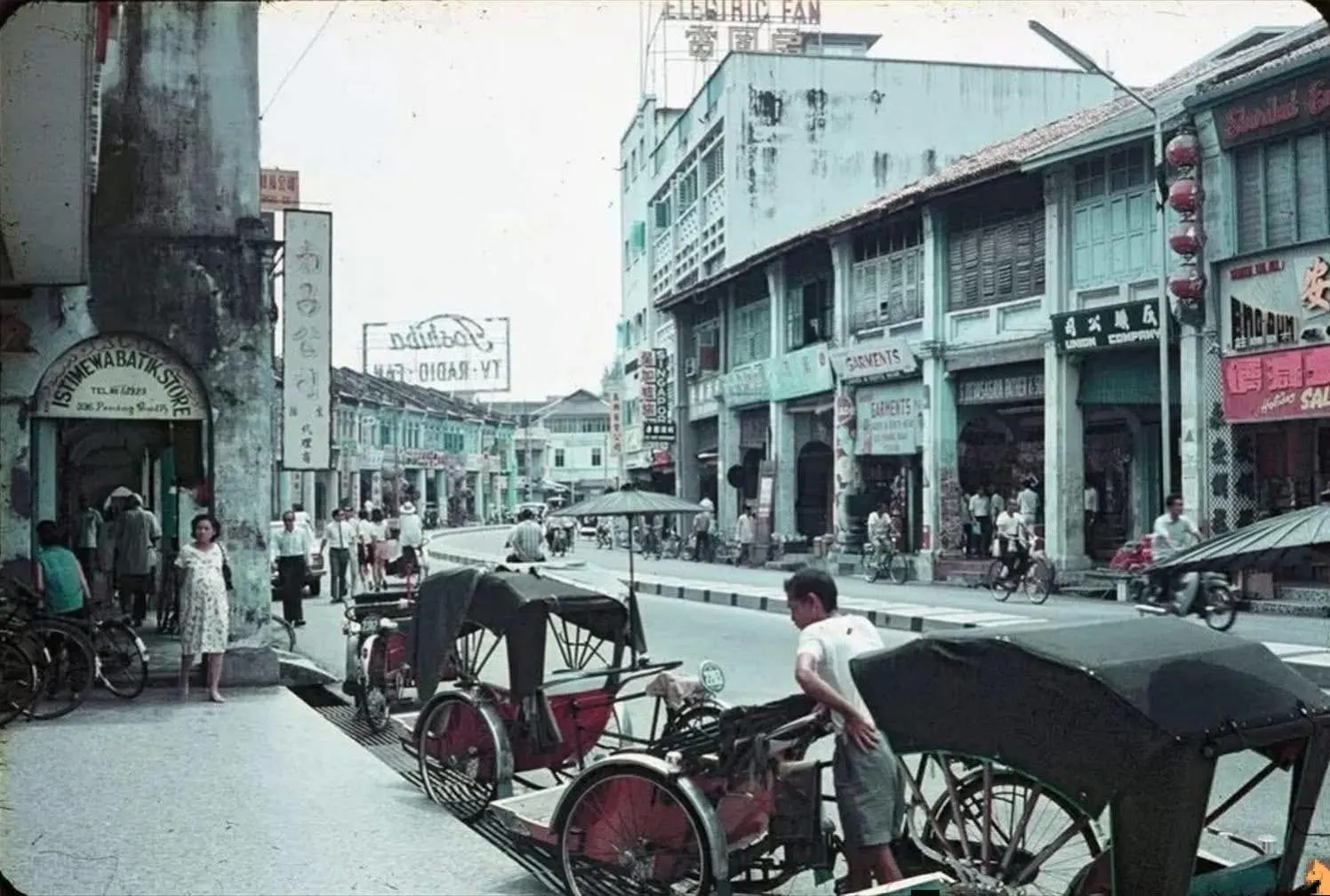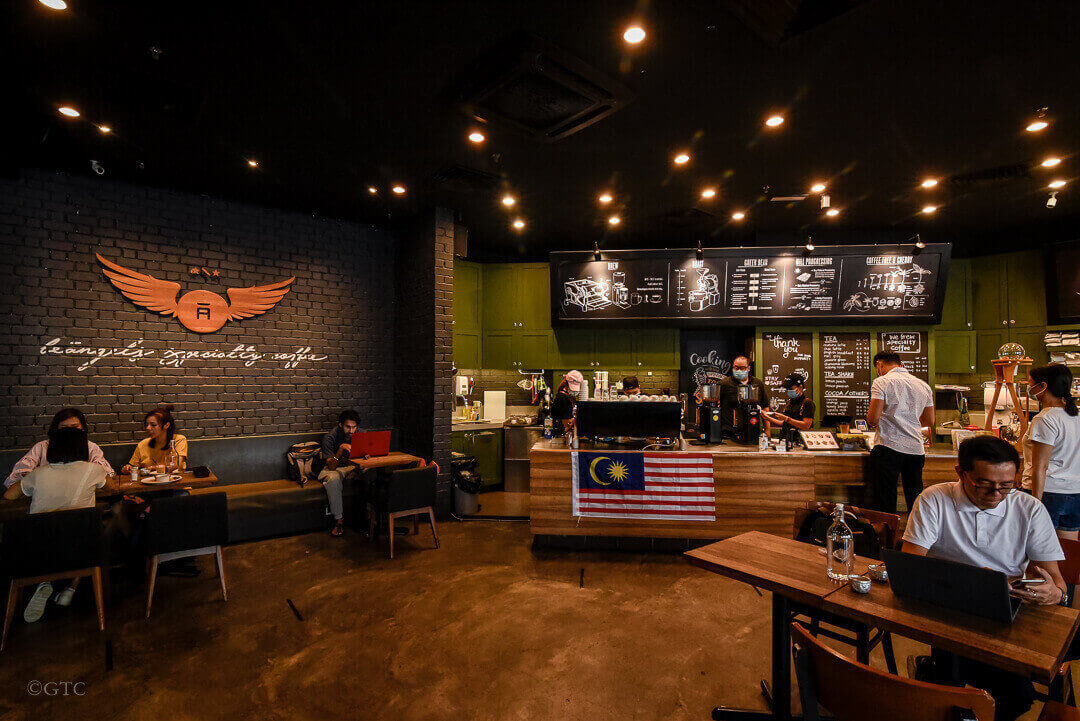The trishaw is much more than a quirky tourist ride in the heritage city of George Town, Penang. It stands at the intersection of transport history, urban culture, and Malaysian heritage. From its origins as a humble pedal-driven transport to its modern role in heritage tourism, the trishaw remains a living icon.

What is a Trishaw?
Simply put, a trishaw (sometimes called “pedal rickshaw”, “cycle rickshaw” or locally in Malay, beca) is a three-wheeled human-powered vehicle designed to carry passengers. The driver pedals, while passengers sit in a cabin or seating area attached to the frame. In the Malaysian context, the term beca (Malay) is derived from the Hokkien word bé-chhia (“horse cart”).
Origins of the Trishaw
Early Roots
The concept of the rickshaw began with two-wheel “jinrikisha” (man-pulled) vehicles in Japan in the late 19th century. The evolution to the three-wheeled, pedal-driven trishaw took place across Southeast Asia and beyond in the early 20th century. For example, in Singapore the first pedal rickshaws appeared in April 1914.


Arrival in Penang & Malaysia
In Penang, the trishaw arrived around 1935. Some information suggest the current type became popular after the Japanese occupation (1941-45). Earlier, pedestrian-pulled rickshaws gave way to cycle rickshaws (or trishaws) in Malaysian cities.
Role of the Trishaw in George Town & Malaysia
Primary Urban Transport
For much of the mid-20th century, trishaws were ubiquitous in George Town and other Malaysian cities. They provided affordable, flexible transport – ferrying school children, housewives, marketgoers, and small loads. In George Town alone, at their peak there were thousands of trishaws.
Social & Cultural Significance
The trishaw isn’t purely about transport: it also played a social role. The drivers often knew their routes intimately, engaged with local communities, and became part of the city-life tapestry. Over time, the image of the trishaw became linked to the heritage of George Town: the narrow streets, the colonial era buildings, the interplay of cultures.


Decline as Utility Transport
With the rise of motorised transport (cars, buses, motorcycles) and rapid urbanisation, the practicality of trishaws for everyday commuting declined. In Penang, for instance, the number of trishaws dropped dramatically — from thousands to only around 200 in George Town. Moreover, policy shifts and changing road use patterns made the trishaw less suited for modern heavy traffic.
The Trishaw Today – Heritage, Tourism & Adaptation
Heritage Attraction
Today, the trishaw in George Town is more a heritage icon and tourist experience than a mainstream transport mode. Visitors love the trishaw rides through heritage streets, decorated vehicles with neon lights and music, storytelling by drivers, and the slow-pace charm.
Decorated & Themed Rides
Many trishaws now feature bright decorations, theme characters, LED lights, music systems—turning the ride into a fun, photo-friendly experience. For example, in Malacca (Melaka) the trishaws are known for flamboyant designs.
Challenges to Continuity
Despite its charm, the trishaw trade faces pressures: fewer young people willing to become riders, low incomes relative to effort, and competition from other tourism offerings. One article notes: “Trishaw riding … is dying soon as no new generation would like to take over these batons.”
Integration into Heritage Trails & City-Branding
In George Town — a UNESCO World Heritage site — the trishaw supports the city’s heritage branding. It is part of heritage-walk trails, cultural tours, and the immersive “old city” experience.
The trishaw of George Town is not simply a colourful photo-op—it is a tangible link to a time when human-powered vehicles shared the streets of this island city, before the dominance of motor transport. It carries rich layers of history, culture and community. Today, its role has evolved: from everyday commuting to heritage experience, from mass transport to niche tourism. For George Town, the trishaw remains a symbol of the city’s capacity to retain its identity even as it modernises.






